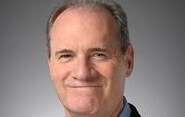PERSON OF THE WEEK: Brian Simons is founder and president of Altavera Mortgage Services, offering collaborative, end-to-end loan fulfillment services to residential loan originators. Previously, he served as executive vice president and chief operating officer of Urban Lending Solutions, one of the nation’s largest providers of loss mitigation services. With an 18-year career in the mortgage industry, Simons has deep experience in capital markets, loss mitigation and origination.
MortgageOrb recently interviewed Simons to get his view on why the SAFE Mortgage Licensing Act is such an important topic – and whether his company is seeing an increase in non-qualified mortgage (non-QM) activity, as it had previously forecast.
Q: The Senate is currently considering a widely popular bill – already approved by the House – that will relax the rules of the SAFE Mortgage Licensing Act to make job transitions easier for loan officers. Why is the licensing of mortgage originators such an important topic?
Simons: Loan officers are changing jobs more frequently than ever, often crossing state lines in pursuit of their next role. I applaud the proposed bill for acknowledging this reality with a 120-day licensing grace period for loan officers who move from one state to another or leave a bank or credit union for an independent lender or brokerage.
That said, I’m a big believer in the importance of mortgage originator licensing. By requiring that mortgage loan originators in one state be held to the same standards as mortgage loan originators in another, the SAFE Act provides a safer, more consistent consumer experience. It also provides a way for consumers and the industry to verify originators’ history and qualifications. Last, but certainly not least, it helps ensure bad actors cannot escape regulatory action simply by crossing state lines.
Q: Do you see the minimum standards for state licensing and registration of mortgage loan originators (MLOs), as set forth in the SAFE Act, as sufficient to protect borrowers and lending institutions from negligent lending practices?
Simons: Although Nationwide Multistate Licensing System & Registry (NMLS) sets federal minimum guidelines for MLO pre-licensing and continuing education, there is a good deal of variation when it comes to additional requirements from state licensing agencies. In some states, MLOs must complete education requirements before they apply for an NMLS number, while others allow MLOs to complete their coursework any time within the calendar year. And in most states, continuing education is performed on an elective basis, with the only real stipulation being that MLOs can’t take the same class back-to-back. So, although MLO licensing exams and continuing education courses are a good starting point, participants in these programs don’t necessarily share a comprehensive and consistent level of expertise.
That’s why Altavera developed its own, in-house training program called Altavera Academy. The academy delivers more than 90 hours of coursework that equips our staff to consistently and effectively deliver top-notch work for our clients and their borrowers. Having one of the most knowledgeable staffs in the industry is not just a point of pride – it enables us to do our work right the first time, which serves our clients’ bottom lines. Our commitment to ongoing training and education has proven particularly valuable in light of the Consumer Financial Protection Bureau’s TILA-RESPA Integrated Disclosure (TRID) rule and other complex regulations.
Q: As a third-party provider of loan fulfillment services, Altavera interacts with a broad sample of lenders. What lingering effects of TRID are still impacting loan production and closing processes that you have observed?
Simons: The most common issues we see are errors and omissions on the initial loan estimate (LE), changes made to the LE without a valid change of circumstance, and the initial closing disclosure (CD) being sent out before the file was properly reviewed and reconciled (and, in some cases, before the file was clear to close).
To combat these problems, extreme diligence and care must be taken with both the initial LE and the final CD. Sales teams must get on board with this necessity and provide terms and fees accordingly. Perhaps most critically, access must be strictly controlled so that any staff member touching an LE or CD thoroughly understands the details of TRID regulation.
Q: In April, MortgageOrb reported that your company expects increased non-QM activity in the coming months. Does that prediction hold true today? What other market trends does Altavera anticipate based on the staffing requests it receives?
Simons: We continue to receive requests for underwriting and processing support on non-QM loans at a pace that exceeds last year’s volume, and volume is about on pace with what we observed early in the second quarter.
The newest trend we’re seeing is significant interest in closed-loan file review, also called pre-purchase review, for both QM and non-QM loans. In fact, demand has been so strong that we’ve formalized an offering around this service. It’s something we’ve done on a limited basis for existing clients for some time, but now that so many large lenders, investment firms and aggregators are expressing interest, we’ve ramped up our capabilities.
Closed-loan file review involves auditing a loan package prior to purchase by a correspondent buyer or aggregator by validating product conformity with investor guidelines, reviewing the credit decision and supporting documents, checking QM/ability-to-repay requirements, verifying collateral valuation, and reviewing closing documentation and other compliance issues.
Q: Speaking of non-QM activity, how do you respond to critics of so-called “stated income” or “low doc” loans? Should investors be wary of these loans as a throwback to the loose lending practices of the pre-financial crisis era?
Simons: Non-QM loans, which can include stated income loans, are not inherently risky products. These are not the same subprime loans that led to the housing crisis. Today’s non-QM loans carry a higher average borrower credit score than pre-crisis loans, and they require higher down payments for borrowers with the riskiest credit profiles. They do not come with prepayment penalties. They’re subject to stronger regulations that ensure independent collateral valuation and hold originators accountable for the loan’s performance. And, contrary to popular belief, they’re still subject to Dodd-Frank’s ability-to-repay standards, even if alternate proof of income is used (as in the case of stated income loans).
That said, non-QM loans need a rock-solid fulfillment process to ensure their legitimacy and liquidity on the secondary market. These loans are not an area of specialty for the average loan officer, so it’s important to partner with a fulfillment team that has a full understanding of non-QM underwriting requirements. For our clients in the non-QM space, we assign dedicated resources that specialize in non-QM to ensure every loan is compliant and performing.














